Posted by Matthew C. Keegan Know How
Continually losing air in the same tire is a certain sign that a leak is present. If you find a hole, then it’s a simple matter of plugging it, adding air and going on your way. Unfortunately, not every tire leak is easily found, making it all the more difficult to resolve a persistent problem. Here are some steps you can take to identify and fix a leak.
1. Add Air to the Affected TirePut sufficient air in your tire according to the pounds-per-square-inch (PSI) recommendation listed in the owner’s manual, on the placard found on the driver’s door jamb or on the inside of the glove box. The tire should be cold when inflating to ensure an accurate reading. Inflate each tire on your car and the spare accordingly.
2. Observe CarefullyIf the affected tire continues to lose air faster than the other tires, then you have a leak. You’ll find most leaks by visual inspection — a protruding nail, a hole or a cut are obvious signs — and by listening to or feeling around the tire for air release. Remove nails and fill holes, but any puncture in the tire shoulder or sidewall areas means you’ll have to replace the tire.
Some leaks are imperceptible under normal observation, but there are two ways to find a leak. First, cover the affected tire with a solution of soap and water. If a leak is present, the impacted area will bubble up, revealing the leak. Second, you can always remove the tire from the car, then submerge it in water. Bubbles will soon form, making it easy for you to identify the source of the leak.
5. Identify the Affected ComponentNot all leaks can be directly attributed to the tire. The tire itself may be in top condition, but there are two other ways a tire may leak.
First, a bad valve stem can cause a tire to lose air through the valve base or body.
Second, the wheel-mounting surface may be defective. It can be damaged by hitting a pothole or through corrosion.
These two hidden problems become visible through the soap-and-water test or by submerging the tire.
6. Replace or SealYou can resolve a tire leak in two ways.
First, if the leak is due to the tire itself, then a tube sealant kit can handle most small leaks.
Second, for leaks not involving the tire directly, replacing a worn valve stem or a damaged wheel should provide a comprehensive fix.
Check out all the driveline & wheel parts
Photo courtesy of Flickr.
Categories
Know How
Tags
car care, flat tire, flat tire causes, tire care, tires, wheels
Matt Keegan has maintained his love for cars ever since his father taught him kicking tires can be one way to uncover a problem with a vehicle’s suspension system. He since moved on to learn a few things about coefficient of drag, G-forces, toe-heel shifting, and how to work the crazy infotainment system in some random weekly driver. Matt is a member of the Washington Automotive Press Association and is a contributor to various print and online media sources.
He since moved on to learn a few things about coefficient of drag, G-forces, toe-heel shifting, and how to work the crazy infotainment system in some random weekly driver. Matt is a member of the Washington Automotive Press Association and is a contributor to various print and online media sources.
By Conor Fynes
Updated on Apr 27, 2022
Reviewed by Carrie Adkins, VP of Content.
While making the usual provisions and getting protected with
car insurance
are important, knowing how to find the exact source of the leak is a vital skill.
Tires are inherently designed to take a lot of abuse. After all, even the best-maintained highway will have potentially sharp debris around.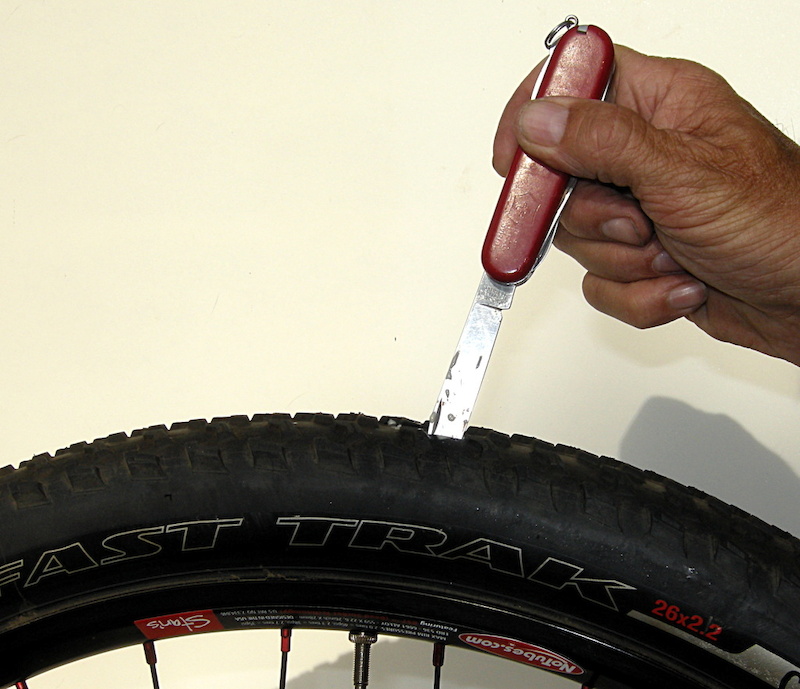 As a driver, it's likely that you'll have to deal with a
As a driver, it's likely that you'll have to deal with a
punctured tire
at one point or another.
So, here's how to find a slow leak, with a little help from
car insurance
comparison and broker app
Jerry
.
RECOMMENDED
No spam or unwanted phone calls · No long forms · No fees, ever
ZIP Code
ZIP Code
Find insurance savings (100% Free)
Make a regular habit of maintaining and inspecting your tires
Check your
tire pressure
regularly, at least once per month. A
gauge pen
is remarkably quick and easy to use, and checking all four tires should never take more than five minutes at a time.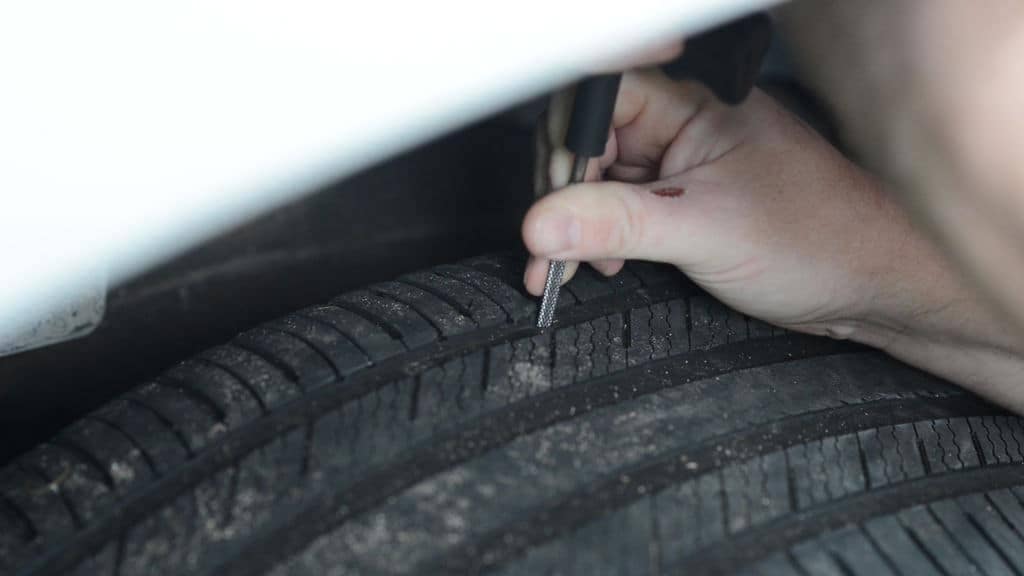
Giving your tires a regular
visual inspection
is worthwhile as well. You never know if there are any shards embedded in a tire, and it's far safer to deal with when the car is parked as opposed to risking the tire blowing while out on the road.
Do this on a monthly basis; it barely takes any time and could nip a problem at the root before it's allowed to grow.
It should be noted that tires will naturally lose their pressure over time, punctures or not. This is especially true during the colder months when air contracts. If you are regularly gauging the pressure, you should pump up the tires whenever they drop below the recommended threshold.
It's important to keep
tire sealant
,
a gauge pen
, and
an air pump
in the vehicle with you. They may be easy to overlook before problems occur, but you'll miss them dearly if they're ever needed.
They may be easy to overlook before problems occur, but you'll miss them dearly if they're ever needed.
Train yourself to spot the signs of a leaking tire
First off, you should check to see that the pressure valves have been shut tightly enough. Air may be escaping because the valve wasn't put back on tightly enough after the last time the pressure was checked. If you are still sure there's a leak, you should pump up the tire again.
Having a full set of air to work with will make it considerably easier to spot the leak.
Tire leaks fortunately give off several signs that reveal their whereabouts. The distinctive hissing whistle of leaking air is arguably the biggest tell, and you may be able to pinpoint it by ears alone.
Giving the affected tire a visual glance over with a flashlight can help reveal visible damage or objects embedded in the tire. Lastly, by running your hand closely over the tire, you may be able to feel the gentle gust of air on your hand.
If the natural clues aren't helping, give the tire the "Bubble Test"
The "Bubble Test" is a neat trick if the regular cues aren't helping much. Create a solution of water and soap, with enough soap to give the mix a bubbly froth. Apply the soapy mix all over the leaking tire, so that it's covered in soap bubbles. If there is a leak, it should be disturbing the bubbles around it, making the leak far more apparent than it would have been before.
In terms of soaps, using a 20% detergent ratio is recommended for the fact that it is very bubbly. Needless to say, the Bubble Test is suited for a home environment, and may be difficult to pull off in a highway situation.
Patch a minor leak, leave anything more severe to the professionals
Once you have properly identified where the source of the tire leakage is, you should make a quick appraisal whether or not it is severe enough to forego self-repair. As a general rule of thumb, a puncture that is any greater than 1/4" across in diameter is probably going to be too much for you to fix yourself on the road.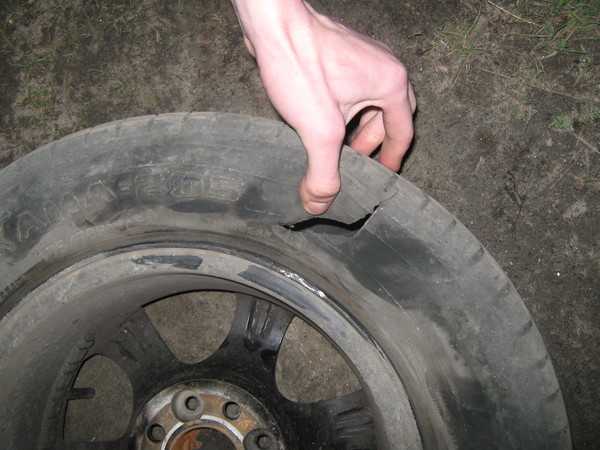
In the event you have found the leak before it got too big, you can use a tire sealant spray to effectively fill in the puncture. Applying a spray is a temporary solution at best, but you can at least extend the tire's life long enough to attend the matter on your own time within reason. This quick fix is a far cry from needing to change tires or enlist the help of roadside assistance.
In the case that the leak is bigger,
roadside assistance
can come to repair or replace the tire for you. Although this can be quite costly out of pocket, many insurance policies will include this service. To find the one that will cover roadside assistance the best, try using the
Jerry
app. A licensed broker, Jerry does all the hard work of finding cheap quotes from the top name-brand insurance companies and buying new car insurance. Jerry will even help you cancel your old policy.
And to ensure you always have the lowest rate, Jerry will send you new quotes every time your policy comes up for renewal, so you’re always getting the coverage you want at the best price.
RECOMMENDED
Judith switched to Progressive
Saved $
725
annually
Alexander switched to Travelers
Saved $
834
annually
Annie switched to Nationwide
Saved $
668
annually
02/22/2018
Despite the objective importance of the spare tire, not all drivers always have it with them. Some do not carry a spare tire out of hope or belief that their tires are invulnerable. Others deliberately take this step, as they stocked up with a special tool in advance, which, if necessary, can eliminate a tire puncture along the way. What else can be used and how to do it right? Let's figure it out.
Some do not carry a spare tire out of hope or belief that their tires are invulnerable. Others deliberately take this step, as they stocked up with a special tool in advance, which, if necessary, can eliminate a tire puncture along the way. What else can be used and how to do it right? Let's figure it out.
Contents of :
Conventionally, all methods for express tire repair can be divided into two categories:
Consider ways to restore a damaged tire on the road. The first three methods are temporary. The latter, with the right approach, allows you to completely restore the tire.
 e. preventive). A special sealing compound is pumped into all four undamaged tires. While driving, it is inside the wheel in liquid form. If the tire suddenly loses its tightness, then this composition, leaving together with the air, clogs the slot in a few seconds. This method is relevant if you have a long trip under time constraints.
e. preventive). A special sealing compound is pumped into all four undamaged tires. While driving, it is inside the wheel in liquid form. If the tire suddenly loses its tightness, then this composition, leaving together with the air, clogs the slot in a few seconds. This method is relevant if you have a long trip under time constraints. 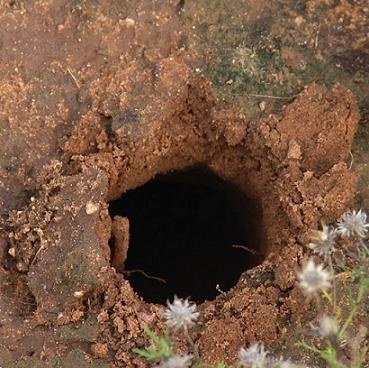
After removing the foreign object, the hole is processed with an awl with abrasive edges: this tool must be inserted into the puncture and cleaned and developed with intensive reciprocating movements several times.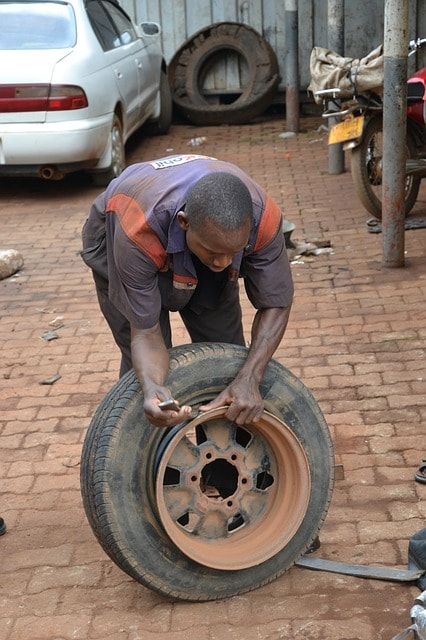 Then the raw rubber tow is removed from the package and inserted into the eye of the second awl so that both ends are the same length. The hole in the tire and the raw rubber is treated with an activator. Next, the awl is inserted into the puncture in such a way that small ends of the tourniquet, about a centimeter long, remain outside. After 5 minutes, the excess remaining on the surface is cut off. This method can also successfully eliminate small side cuts.
Then the raw rubber tow is removed from the package and inserted into the eye of the second awl so that both ends are the same length. The hole in the tire and the raw rubber is treated with an activator. Next, the awl is inserted into the puncture in such a way that small ends of the tourniquet, about a centimeter long, remain outside. After 5 minutes, the excess remaining on the surface is cut off. This method can also successfully eliminate small side cuts.
There is a technique that allows using wire and several bundles of raw rubber to get rid of even extensive side damage to tires. However, it is quite difficult to implement and not every driver will be able to implement it.
Consider a few well-known tools that are most widely used to repair punctures:
 It works in the same way as most sealants: the container is thoroughly shaken, after that a hose is attached, and the contents from the container are completely pumped into the tire. The maximum diameter of the repaired hole is 4.5 mm. This is almost always enough to repair punctures caused by nails and screws.
It works in the same way as most sealants: the container is thoroughly shaken, after that a hose is attached, and the contents from the container are completely pumped into the tire. The maximum diameter of the repaired hole is 4.5 mm. This is almost always enough to repair punctures caused by nails and screws.
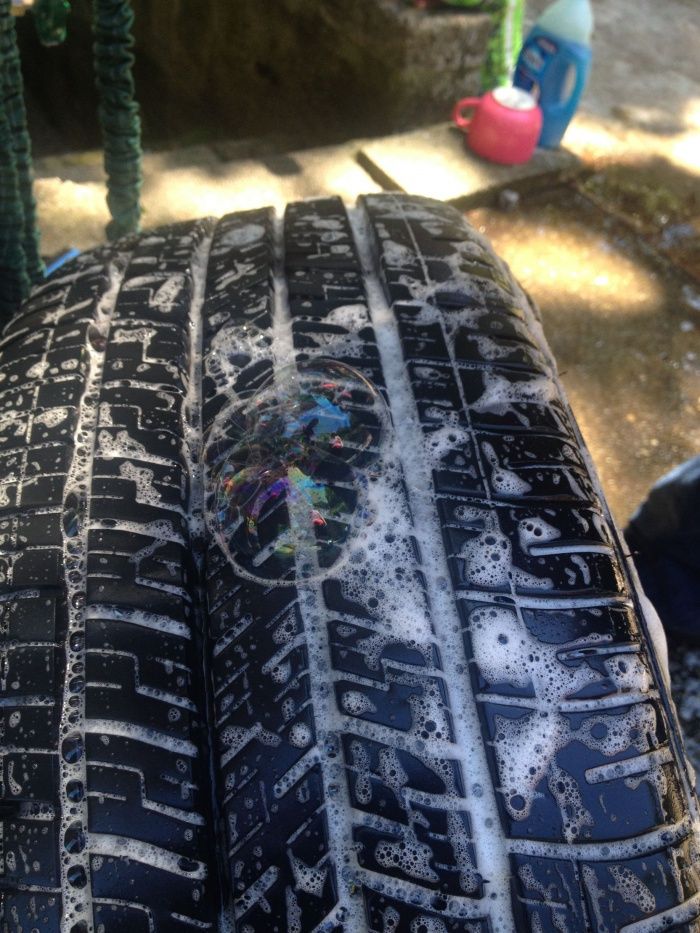
Our online store offers a wide range of tire repair products. You can order them through the TopDetal.ru website or by calling 8 800 444-75-16.
Also read on our website about the best liquid rubbers.
Return to the list sharp debris accumulated over the winter under a layer of snow.
As a result of a puncture, the pressure in the tire decreases, and then the driver sees a corresponding signal on the instruments of his car.
It often happens that you can’t get to the nearest service with such damage, so you have to repair the wheel on your own using improvised means. Let's tell you how it's done.
In case of any damage to a car tire, it is important to act in accordance with a clear algorithm of operations. It is equally important to choose the most suitable flat tire repair option. Experienced car owners usually know what to do, and newcomers in most cases are lost.
Experienced car owners usually know what to do, and newcomers in most cases are lost.
If you find that the car has a flat tire, park on the side of the road, turn on the emergency gang, assess visibility and put an emergency stop sign at a distance of 15 m from the car - in the city, 30 m - on a country road.
According to the rules of traffic rules, a punctured wheel can be considered the reason for stopping in a prohibited area, but you should not abuse it. Usually with this damage you can drive 20-30 meters and stop in a safer place. Don't forget to take into account the amount of space on the side of the machine that is needed to clear a wheel puncture. Following the voice of reason (and the Rules of the Road), wear reflective clothing at night or when visibility is poor.
In order to cope with the problem of rubber puncture on your own, you need to purchase a repair kit at a car dealership and always have a repair kit with you. It contains thread-reinforced cords, glue, a round rasp with notches, an abrasive awl with a holder, or a needle for installing a tourniquet. Pay attention - too "toothy" awl can break the cord threads, and its task is to push them a little.
Pay attention - too "toothy" awl can break the cord threads, and its task is to push them a little.
Separately, purchase a sealant, a sharp knife, a screwdriver and pliers. With such an arsenal, in most cases you will be able to repair the damage without disassembling and removing the wheel.
If a nail gets into the wheel, then the puncture site is not always visible to the naked eye. To find it, you need to listen - the air leaves the tire with a low hiss. You can also apply a soapy solution to the wheel and find a place where bubbles will inflate. Instead of a soapy solution, you can water the protector with plain water and watch for the appearance of bubbles.
Tire repair with a patch consists of the following steps:

The best patches are produced by Maruni, Rossvik and Tip-Top. They use special thick rubber.
Instead of a patch, you can put a flagellum made of raw rubber, which will serve as a miniature patch. It is included in the repair kit. Here's how it's done:
How to properly store tires
How to choose tires for your SUV

The advantages of such a repair are simplicity, low cost and decent reliability. It allows the tire to be used at least until the end of the season. But there are also disadvantages. For example, when installing a harness, you can damage the cord. Therefore, if possible, it is better not to enlarge the hole, but, having pumped up the tire, drive to the nearest car service.
You can repair a punctured tire with a liquid aerosol sealant, which is sold in cans. We take out the object that has fallen out of the tire, pour the sealant through the valve and scroll the wheel so that the product is distributed inside the rubber. After that, we pump up the wheel and drive 4-5 kilometers at low speed. So the sealant is finally evenly distributed inside the tire.
This method is easier than repairing a puncture with a patch or flagellum, but the sealant will not cope with a hole that is too large.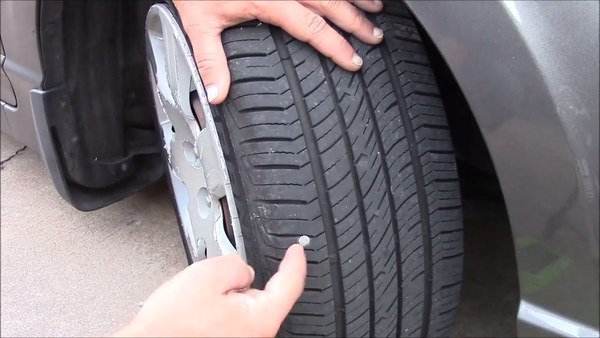 Another disadvantage is the possibility of wheel imbalance.
Another disadvantage is the possibility of wheel imbalance.
If you punctured a tire, found a puncture, and there were no foreign objects in it, and you don’t have a repair kit or a spare wheel, you can use the “folk” method. Find a self-tapping screw (if not, unscrew it from some part in the cabin) and screw it into the puncture up to the very head , as in a plastered or wooden wall. A tightly screwed self-tapping screw will be able to maintain pressure, and use a sealant to repair minor damage inside the rubber. Of course, this will not make the wheel completely sealed, but it will give time to get to the nearest service. And in the best scenario with such a repair, you can drive up to a month, periodically pumping up the wheel when the tire pressure drops below 1.5 atmospheres.
It is better to inflate a completely flat tire without a spool, since when air is injected, resistance to the pump occurs. And the absence of this part allows the air flow to increase, which, on the contrary, facilitates the operation of the compressor.